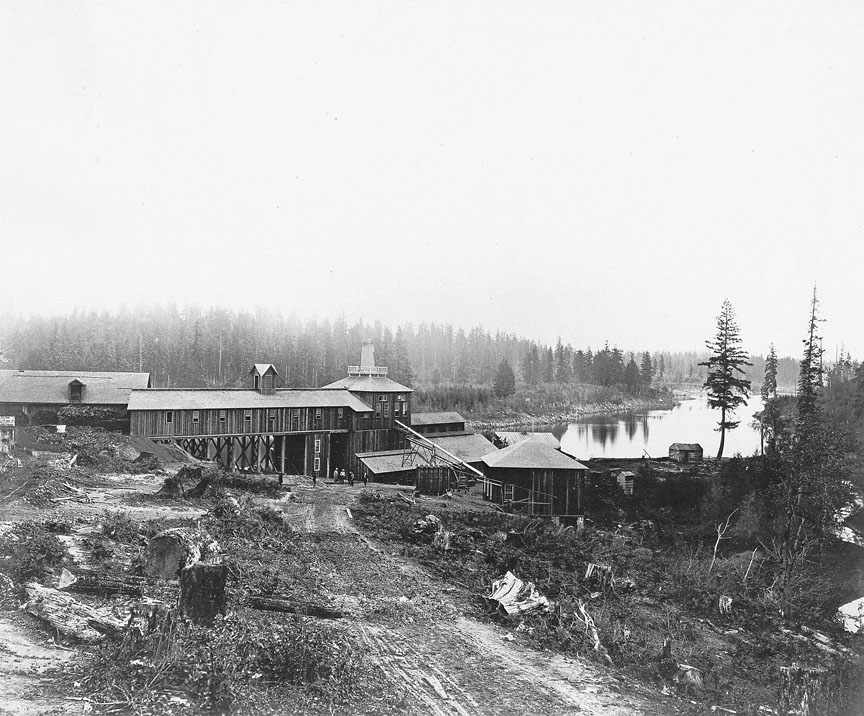- Catalog No. —
- OrHi 21596
- Date —
- 1867
- Era —
- 1846-1880 (Treaties, Civil War, and Immigration)
- Themes —
- Science, Medicine, and Technology, Trade, Business, Industry, and the Economy, Transportation and Communication
- Credits —
- Oregon Historical Society
- Regions —
- Portland Metropolitan
- Author —
- C. E. Watkins, photographer
Oswego Iron Works
In 1867, workers smelted the first iron ingots produced at the Oregon Iron Company at the confluence of the Willamette River and Sucker Creek, now known as Oswego Creek. Brothers Henry and John Green, along with wealthy Portland banker William S. Ladd, founded the company in 1865, and early stockholders included Portland Mayor Henry Failing.
Ore was extracted from mines on the west side of Stafford Road, near South Shore Blvd, and from Iron Mountain, to the north of what is now Oswego Lake. Investors hoped the company, one of the first industrial manufacturers in the Willamette Valley, would sell its product to railroad companies that were beginning to lay tracks through Oregon, but lower-priced iron imported from Scotland lowered sales.
While the company did smelt some iron for the Central Pacific Railroad, production was not steady. The company reincorporated as the Oregon Iron and Steel Co. in 1882, with Simeon Reed and Ladd serving as top executives. They improved the smelter and developed a pipe-casting plant, which invigorated the business and brought some success; but poor quality ore, debt, government tariffs, and high expenses contributed to its eventual closure in 1894. The company continued on as a pipe foundry until 1928, and the second furnace was dismantled. At the factory’s height in the late nineteenth century, the iron works employed as many as 600 workers. California photographer Carleton E. Watkins captured the factory on a glass plate soon after it was built in 1867.
After production ceased, Ladd used the company lands to form the Ladd Estate Company, which successfully marketed the property for residential and community development. The Lake Oswego Country Club, golf course, and public parks all sit on former iron company lands. An early blast furnace still stands in George Rogers Park; it was placed on the National Register of Historic Places in 1974.
Written by Kathy Tucker, © Oregon Historical Society, 2002.
Further Reading
Fulton, Ann. Iron, wood & water: an ilustrated history of Lake Oswego. San Antonio, Tex.: Historical Pub. Network, 2002.
Oregon Iron Company records. Mss333, Oregon Historical Society Research Library, Portland.
Kuo, Susanna. "The Oregon Iron Chronicles: the story of Oregon's pioneer industry in historical newspapers." https://www.oregonironchronicles.com/
